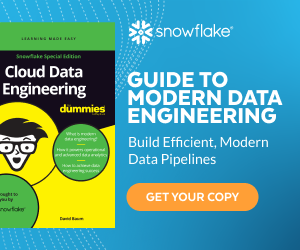Organizations make better decisions when they can predict the likely outcomes of optional courses of action. Predictive modeling is a method of identifying trends and envisioning future outcomes through data modeling, while predictive analytics applies this in practice. Predictive analytics, or prediction analytics, aims to solve business challenges by extracting relevant information from a series of historical data sets. To mine the vast amount of data typically used in predictive modeling, AI and machine learning are often employed.
Common Types of Predictive Modeling
While there are more than a dozen types of predictive models in data science, we’ll explore the five most commonly used in predictive analytics.
Classification
The classification model simply puts data into various categories based on learnings from historical data. It answers basic yes/no questions, such as “Is this transaction fraudulent?” or “Is this customer going to switch to a competitor?” Classification modeling is often used in healthcare to identify whether or not a particular medication is appropriate to treat a disease. Decision trees are a more complex type of classification modeling, analyzing multiple variables. In a decision tree, an algorithm evaluates ways to split data into branches or subsets based on different variables. For example, a decision tree might identify purchase intent based on a variety of factors.
Regression
Regression analysis seeks to identify relationships among variables. It looks for patterns in very large data sets and determines how they relate to one another. It can uncover which variables actually have an impact. An example is a sales team looking at a variety of data sets to find out what factors will impact sales in the upcoming quarter.
Clustering
This type of modeling sorts data into clusters, or nested groups based on shared attributes. Clustering models identify groups of similar records in a data set and then label them by group. Clustering models are frequently used in targeted advertising, grouping customers together who share various characteristics for tailored campaigns.
Anomaly detection
Anomaly detection, also known as the outliers model, outlier mining, and novelty detection, identifies anomalous data records in a data set. This type of modeling is common in the retail and financial services industries. For example, it can determine that a credit card transaction for a $2,000 purchase at a computer store is probably not fraudulent, while a $2,000 purchase at a gas station likely is.
Association rules
Association rules help to show the probability of relationships between items within large data sets. This technique is superior to conventional forecasting, which is typically based on best-case predictions, because it allows decision-makers to explore what-if questions to evaluate possible outcomes. A manufacturer might use association rules to see how its business would perform if supplier pricing increased, if a natural disaster occurred, or if new regulations came into effect.
4 Challenges Associated with Predictive Modeling
While predictive modeling has valuable benefits for nearly any organization, there are challenges involved in using it effectively.
1. Depends on the completeness and accuracy of data
Accurate predictive insights depend on the completeness and accuracy of the data going into the predictive model. If you aren’t looking at data that addresses all the potential factors impacting an issue, you will end up with an analysis with holes in it. And because predictive modeling typically involves extremely large data sets and often relies on AI and machine learning, it’s easy to overlook deficiencies in the data.
2. Can create artificial boundaries
A related problem is overlooking opportunities simply because the predictive model didn’t uncover them. It’s easy to rely solely on predictive analytics to identify business opportunities when the best method includes critical thinking and curiosity to explore possibilities.
3. Vulnerable to biases
One of the most significant challenges with predictive modeling is ensuring that biases aren’t introduced. For example, nonrepresentation can skew results, leading to decisions that harm various demographic groups. The classic example is the use of inadequate predictive models for credit scoring that statistically discriminate against people in certain racial and ethnic groups. Predictive models cannot establish cause and effect, so organizations must use caution when relying on AI and machine learning.
4. Requires collaboration
For all the reasons discussed above, it’s crucial to have a variety of contributors collaborating together in creating predictive models. In addition to data professionals, people with valuable domain knowledge and those who are closest to the meaning of the data must be empowered to get involved.
Snowflake for Predictive Modeling and Analytics
Predictive modeling involves massive data sets coming from various sources in a variety of formats. The Snowflake Data Cloud serves as a secure repository that quickly and easily scales to meet the needs of predictive modeling. Having a fully featured centralized repository for data ensures that contributors can work together so all relevant data is going into a predictive model. Additionally, the Snowflake Data Cloud can process unstructured and semi-structured data with ease to facilitate predictive analytics at speed. It serves as a unified platform for data science, AI and ML that enables cross-functional teams to build scalable data preparation, and model inference pipelines to transform data into actionable business insights.
Users can easily augment model performance with shared data sets from their own business ecosystem as well as third-party data from Snowflake Marketplace. And Snowflake’s partner ecosystem provides a wide range of tools and platforms to expand data analytics capabilities in the cloud.
See Snowflake’s capabilities for yourself. To give it a test drive, sign up for a free trial.

